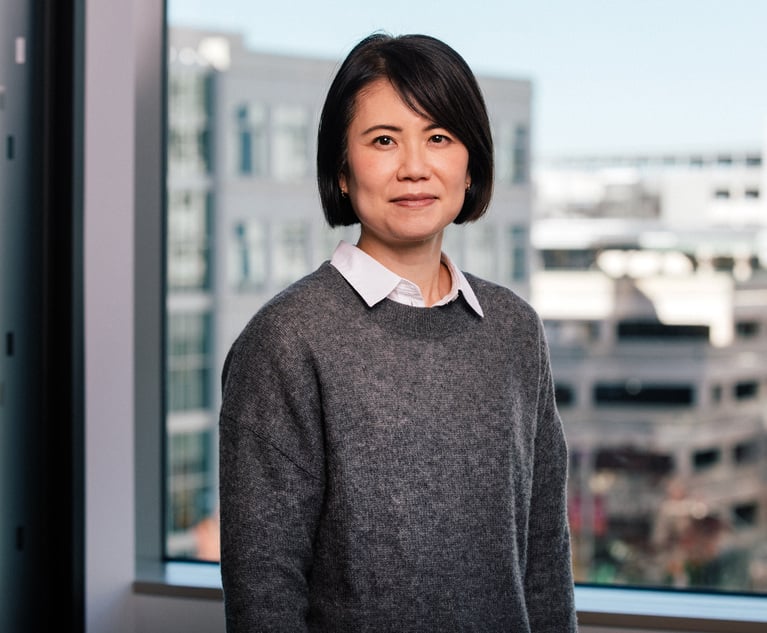IBM Springs Patent Surprise on Zillow—and Judge Zilly
After 10 months of complex patent litigation against Zillow, IBM filed a second suit this week alleging five new patents. U.S. District Judge Thomas Zilly said he was "quite surprised, even a little shocked," that IBM would do that while the parties are still trying to get a grip on the first case, and suggested that discovery in the first case might have to be put on hold.
July 24, 2020 at 05:15 PM
4 minute read
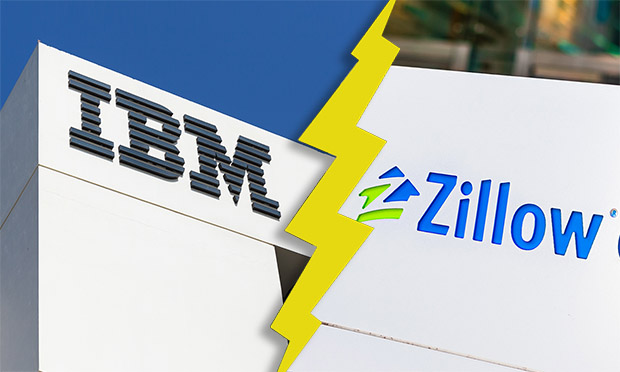 Photo illustration: Jason Doiy/ALM
Photo illustration: Jason Doiy/ALM
The original version of this report was published in the weekly IP briefing Skilled in the Art.
International Business Machines Corp. hasn't gotten very far yet in its patent litigation against Zillow Inc. Ten months after Big Blue asserted seven patents covering a variety of technologies, the primary development is that U.S. District Judge Josephine Staton of Southern California transferred the case to the Western District of Washington. Though not before U.S. Magistrate Judge John Early scolded IBM for its "'Ready—Fire—Aim' approach to discovery."
In Seattle, Zillow has complained to U.S. District Judge Thomas Zilly that IBM has submitted 25 infringement contention charts, several of them exceeding 200 pages. IBM says that's on Zillow—without more meaningful discovery, it can't be more specific. Zilly has raised the possibility of bifurcating discovery, claim construction, motion practice, or trial between Zillow's consumer and business products, or between liability and damages, all with the goal of simplifying the case. Zillow thinks that's a great idea, and has proposed having a "Section 101 day" to get things started.
But IBM, which it should be noted won an $83 million verdict against Groupon Inc. based in part on two of the same patents, has decided it's time for more patent assertion, not less.
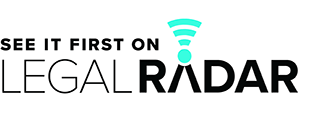 On Wednesday it filed a brand-new infringement suit against Zillow, asserting five more patents. They cover "a novel iconic GUI," methods for using contextual information to rank search results, and methods for the stacking of portlets in portal pages.
On Wednesday it filed a brand-new infringement suit against Zillow, asserting five more patents. They cover "a novel iconic GUI," methods for using contextual information to rank search results, and methods for the stacking of portlets in portal pages.
"This lawsuit is the result of Zillow's decision to escalate its behavior by willfully infringing five additional patents," IBM, represented by Desmarais and Harrigan Leyh Farmer & Thomsen, alleges in the suit.
The company says it provided detailed evidence of the infringement to Zillow in writing last fall, but Zillow dismissed it out of hand as a "distraction" from the first lawsuit.
During a virtual status conference Thursday, Zilly said he was "quite surprised, even a little shocked," that IBM would file the new suit, without advance notice, while the lawyers were in the midst of trying to make the first case more manageable.
Desmarais partner Karim Oussayef said the new suit is "really meant as a placeholder" to ensure that the additional patents don't expire, and that IBM wouldn't object to staying it while the first case gets hashed out.
"I'm all for staying the new case at some point," Zilly said, "but it seems to me you need to put your cards on the table first" with regard to infringement contentions.
Oussayef said IBM laid out its infringement theories in detail in its 35-page complaint. He stressed that IBM needs Zillow source code or technical documents to narrow its contentions, but that Zillow has unreasonably insisted that IBM first do the narrowing.
Susman Godfrey partner Ian Crosby and associate Katherine Peaslee argued for Zillow that it would have to provide its "entire code base" to meet IBM's production demands. They said Zillow should not have to provide any source code in the first suit until IBM files infringement contentions in the second, a position Zilly said "seems to have some merit."
Zilly said he understands the "chicken and egg" nature of the discovery standoff, but added that the problem seems partly "IBM's doing, because you waited until yesterday to file the new case with five new patents. And presumably IBM has a boatload of patents. We could play this out again in six months or a year with you filing another case against Zillow."
Oussayef assured Zilly that if the parties can deal with the first case expeditiously, "that will drive potential resolution, one way or another."
Zilly ordered each side to file 10-page briefs on discovery and whether IBM should be required to file additional infringement contentions.
 Sign up for Law.com's Legal Radar to keep up with the latest news and lawsuits in a free, personalized news feed. Track patent litigation and who's getting the work by industry, practice area, law firm, company and region.
Sign up for Law.com's Legal Radar to keep up with the latest news and lawsuits in a free, personalized news feed. Track patent litigation and who's getting the work by industry, practice area, law firm, company and region.
This content has been archived. It is available through our partners, LexisNexis® and Bloomberg Law.
To view this content, please continue to their sites.
Not a Lexis Subscriber?
Subscribe Now
Not a Bloomberg Law Subscriber?
Subscribe Now
NOT FOR REPRINT
© 2025 ALM Global, LLC, All Rights Reserved. Request academic re-use from www.copyright.com. All other uses, submit a request to [email protected]. For more information visit Asset & Logo Licensing.
You Might Like
View All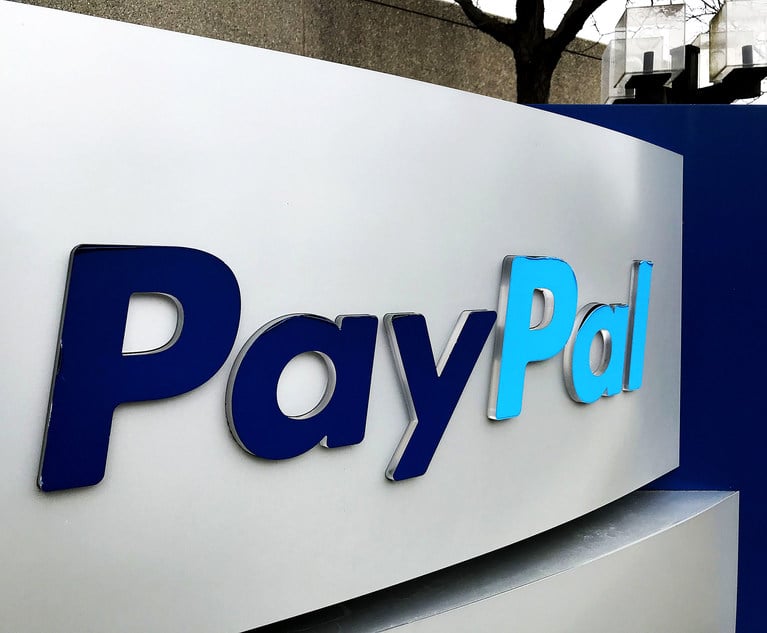
'It's Not Going to Be Pretty': PayPal, Capital One Face Novel Class Actions Over 'Poaching' Commissions Owed Influencers
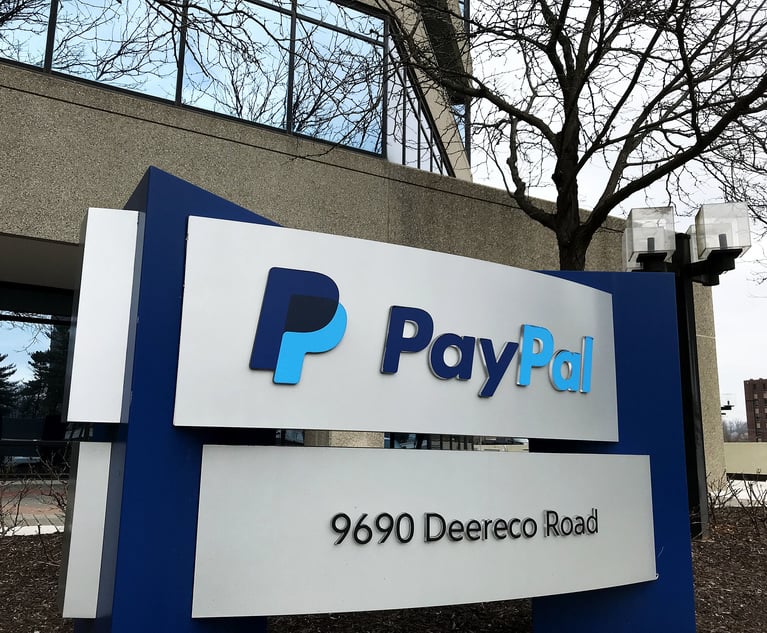
'Biggest Influencer Scam of All Time'?: PayPal Accused of Poaching Commissions Via Its 'Honey' Browser Extension

Amazon's Audible Hit With Privacy Class Action Over Use of Tracking Pixels
Law Firms Mentioned
Trending Stories
- 1'A Death Sentence for TikTok'?: Litigators and Experts Weigh Impact of Potential Ban on Creators and Data Privacy
- 2Bribery Case Against Former Lt. Gov. Brian Benjamin Is Dropped
- 3‘Extremely Disturbing’: AI Firms Face Class Action by ‘Taskers’ Exposed to Traumatic Content
- 4State Appeals Court Revives BraunHagey Lawsuit Alleging $4.2M Unlawful Wire to China
- 5Invoking Trump, AG Bonta Reminds Lawyers of Duties to Noncitizens in Plea Dealing
Who Got The Work
J. Brugh Lower of Gibbons has entered an appearance for industrial equipment supplier Devco Corporation in a pending trademark infringement lawsuit. The suit, accusing the defendant of selling knock-off Graco products, was filed Dec. 18 in New Jersey District Court by Rivkin Radler on behalf of Graco Inc. and Graco Minnesota. The case, assigned to U.S. District Judge Zahid N. Quraishi, is 3:24-cv-11294, Graco Inc. et al v. Devco Corporation.
Who Got The Work
Rebecca Maller-Stein and Kent A. Yalowitz of Arnold & Porter Kaye Scholer have entered their appearances for Hanaco Venture Capital and its executives, Lior Prosor and David Frankel, in a pending securities lawsuit. The action, filed on Dec. 24 in New York Southern District Court by Zell, Aron & Co. on behalf of Goldeneye Advisors, accuses the defendants of negligently and fraudulently managing the plaintiff's $1 million investment. The case, assigned to U.S. District Judge Vernon S. Broderick, is 1:24-cv-09918, Goldeneye Advisors, LLC v. Hanaco Venture Capital, Ltd. et al.
Who Got The Work
Attorneys from A&O Shearman has stepped in as defense counsel for Toronto-Dominion Bank and other defendants in a pending securities class action. The suit, filed Dec. 11 in New York Southern District Court by Bleichmar Fonti & Auld, accuses the defendants of concealing the bank's 'pervasive' deficiencies in regards to its compliance with the Bank Secrecy Act and the quality of its anti-money laundering controls. The case, assigned to U.S. District Judge Arun Subramanian, is 1:24-cv-09445, Gonzalez v. The Toronto-Dominion Bank et al.
Who Got The Work
Crown Castle International, a Pennsylvania company providing shared communications infrastructure, has turned to Luke D. Wolf of Gordon Rees Scully Mansukhani to fend off a pending breach-of-contract lawsuit. The court action, filed Nov. 25 in Michigan Eastern District Court by Hooper Hathaway PC on behalf of The Town Residences LLC, accuses Crown Castle of failing to transfer approximately $30,000 in utility payments from T-Mobile in breach of a roof-top lease and assignment agreement. The case, assigned to U.S. District Judge Susan K. Declercq, is 2:24-cv-13131, The Town Residences LLC v. T-Mobile US, Inc. et al.
Who Got The Work
Wilfred P. Coronato and Daniel M. Schwartz of McCarter & English have stepped in as defense counsel to Electrolux Home Products Inc. in a pending product liability lawsuit. The court action, filed Nov. 26 in New York Eastern District Court by Poulos Lopiccolo PC and Nagel Rice LLP on behalf of David Stern, alleges that the defendant's refrigerators’ drawers and shelving repeatedly break and fall apart within months after purchase. The case, assigned to U.S. District Judge Joan M. Azrack, is 2:24-cv-08204, Stern v. Electrolux Home Products, Inc.
Featured Firms
Law Offices of Gary Martin Hays & Associates, P.C.
(470) 294-1674
Law Offices of Mark E. Salomone
(857) 444-6468
Smith & Hassler
(713) 739-1250





